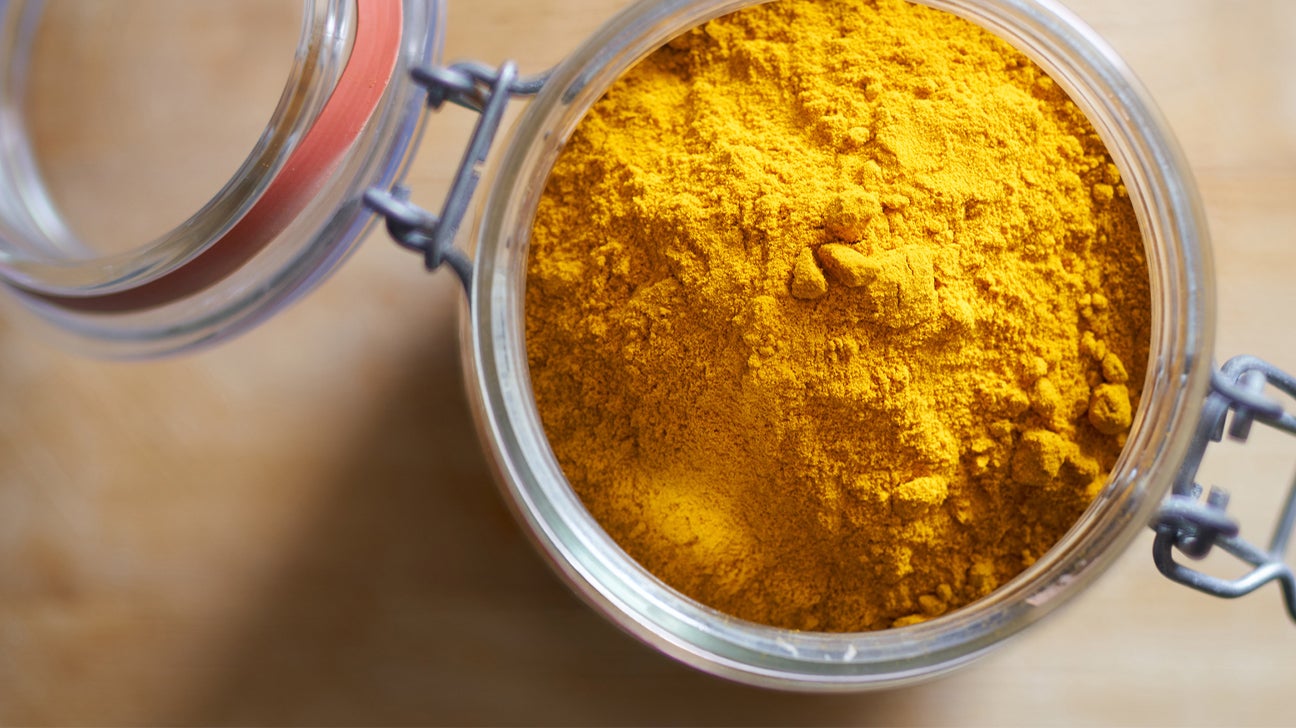Integrative medicine is an approach that combines conventional medicine with complementary therapies to address the underlying causes of pain. It takes into account the physical, emotional, and mental aspects of pain, aiming to provide holistic relief. Integrative medicine recognizes that pain can have various origins and focuses on treating the whole person rather than just the symptoms. By incorporating techniques such as acupuncture, yoga, mindfulness, herbal supplements, and physical therapy, integrative medicine offers a comprehensive and personalized approach to pain management. This approach has shown promising results in improving pain control, reducing reliance on medication, and enhancing overall well-being.
Overview of integrative medicine and its approach to pain management
Integrative medicine takes a holistic approach to pain management, recognizing that pain can stem from various causes and can affect the physical, emotional, and mental well-being of individuals. It combines conventional therapies with complementary approaches such as acupuncture, yoga, mindfulness, herbal supplements, and physical therapy to address the underlying causes of pain. Integrative medicine aims to treat the whole person rather than just the symptoms, providing personalized and comprehensive care. By incorporating these techniques, integrative medicine offers a powerful and effective approach to pain management, improving overall well-being and reducing reliance on medication.
Benefits of using integrative medicine for pain management

Using integrative medicine for pain management offers several benefits, including:
- Holistic approach: Integrative medicine takes into account the physical, emotional, and mental aspects of pain, providing a comprehensive and personalized approach to treatment.
- Reduced reliance on medication: Integrative medicine uses a combination of therapies, reducing the need for high doses of medications and their associated side effects.
- Improved overall well-being: By addressing the root causes of pain, integrative medicine promotes overall well-being and enhances quality of life.
- More effective pain relief: Integrative approaches such as acupuncture, yoga, and herbal remedies have been shown to effectively reduce pain and improve function.
- Empowerment and self-care: Integrative medicine empowers individuals to take an active role in their pain management through self-care techniques, promoting long-term wellness.
Acupuncture as a Pain Management Technique
Acupuncture is a popular technique used in integrative medicine for pain management. It involves the insertion of thin needles into specific points on the body to stimulate the flow of energy and promote healing. Acupuncture is believed to activate the body’s natural painkillers and reduce inflammation. Numerous scientific studies have shown its effectiveness in relieving chronic pain, including headaches, back pain, and osteoarthritis. Additionally, acupuncture has minimal side effects and can be used alongside other pain management therapies for enhanced results. However, it is essential to seek treatment from a licensed and experienced acupuncturist for optimal results.
How acupuncture works in managing pain
Acupuncture works by stimulating specific points on the body, known as acupuncture points, with thin needles. These needles activate nerve fibers, releasing endorphins and other neurotransmitters that block pain signals from reaching the brain. It also promotes the flow of energy, or Qi, through the body’s meridians, restoring balance and promoting healing. Additionally, acupuncture has been shown to reduce inflammation, improve blood circulation, and enhance the body’s natural healing processes. Overall, acupuncture offers a holistic approach to pain management by addressing the underlying imbalances in the body.
Scientific evidence supporting the effectiveness of acupuncture in pain management

Scientific studies have shown that acupuncture can be an effective method for managing pain. Research has demonstrated that acupuncture can provide relief for conditions such as chronic back pain, osteoarthritis, migraines, and postoperative pain. In a meta-analysis of 29 high-quality studies, acupuncture was found to significantly reduce pain intensity and improve physical function in patients with chronic pain. Another study found that acupuncture was as effective as medication in providing relief for migraines. These findings support the use of acupuncture as a safe and effective approach to pain management.
Yoga and Mindfulness for Pain Relief

Yoga and mindfulness techniques have gained popularity as effective tools for pain relief. Yoga combines physical postures, deep breathing, and meditation to promote relaxation and reduce pain. It can improve flexibility, strength, and posture, which can help alleviate pain from conditions like chronic back pain and arthritis. Mindfulness practices, such as meditation and deep breathing exercises, can also help manage pain by reducing stress and promoting relaxation. Research studies have shown that yoga and mindfulness can significantly reduce pain intensity and improve overall quality of life for individuals suffering from chronic pain.
The role of yoga and mindfulness techniques in pain management
Yoga and mindfulness techniques play a crucial role in pain management by promoting relaxation, reducing stress, and improving overall well-being. Yoga combines physical postures, deep breathing, and meditation to alleviate pain and improve flexibility, strength, and posture. Mindfulness practices, such as meditation and deep breathing exercises, help individuals become more aware of their sensations, thoughts, and emotions, which can reduce the impact of pain. Research studies have consistently shown that incorporating yoga and mindfulness into pain management strategies can significantly reduce pain intensity, improve function, and enhance overall quality of life.
Research studies on the use of yoga and mindfulness for pain relief
Research studies have consistently shown the benefits of yoga and mindfulness in pain management. Some key findings include:
- A 2017 study published in the Journal of Pain Research found that a 12-week yoga program reduced pain intensity and improved physical functions in patients with chronic low back pain.
- Another study published in the Annals of Internal Medicine in 2017 showed that mindfulness-based stress reduction (MBSR) significantly reduced pain severity and improved physical functioning in patients with chronic pain conditions.
- A 2018 review of multiple studies published in the journal Pain Medicine concluded that yoga and mindfulness interventions are effective in reducing pain intensity and improving quality of life in patients with various chronic pain conditions.
These studies provide strong evidence supporting the use of yoga and mindfulness techniques as effective strategies for pain relief.
Herbal Supplements and Natural Remedies for Pain

When it comes to managing pain, herbal supplements and natural remedies can provide an alternative approach. Some commonly used herbal supplements for pain relief include turmeric, ginger, and white willow bark. These natural remedies have anti-inflammatory and analgesic properties that can help reduce pain and inflammation. Additionally, essential oils such as lavender and peppermint oil can be used topically to provide localized pain relief. However, it is important to note that not all herbal supplements are regulated by the FDA, so it is crucial to research the safety and efficacy of each remedy before use. Always consult with a healthcare professional before incorporating herbal supplements or natural remedies into your pain management regimen.
Common herbal supplements and natural remedies used for pain management
There are several common herbal supplements and natural remedies that are used for pain management. Some of these include:
- Turmeric: Known for its anti-inflammatory properties, turmeric can help reduce pain and inflammation.
- Ginger: Ginger is another natural anti-inflammatory that can provide pain relief, particularly for conditions like arthritis.
- White Willow Bark: This herb contains a compound called salicin, which is similar to aspirin and can help alleviate pain.
- Boswellia: This resin extract has been used for centuries in traditional medicine for its anti-inflammatory properties.
- Capsaicin: Found in chili peppers, capsaicin can help relieve pain by desensitizing nerve receptors.
Remember, it’s important to consult with a healthcare professional before incorporating any herbal supplements or natural remedies into your pain management regimen.
Safety and efficacy considerations when using herbal supplements for pain relief
When using herbal supplements for pain relief, it is important to consider the safety and efficacy of these remedies. Here are some key considerations:
- Quality and purity: Ensure that the herbal supplement you choose is of high quality and free from contaminants. Look for reputable brands with third-party testing.
- Drug interactions: Some herbal supplements can interact with medications, leading to adverse effects. Consult with your healthcare provider to ensure there are no potential interactions.
- Dosage and duration: Follow the recommended dosage and duration instructions provided by the manufacturer. Avoid exceeding the recommended limits.
- Allergic reactions: Be aware of any potential allergies or sensitivities to herbal supplements. If you experience any adverse reactions, discontinue use and seek medical attention.
Remember, herbal supplements may not be suitable for everyone or may not provide effective pain relief for all individuals. It is always recommended to consult with a healthcare professional before incorporating herbal supplements into your pain management regimen.
Physical Therapy and Exercise in Pain Management

Physical therapy and exercise play a crucial role in managing pain. Physical therapists work with individuals to improve their strength, flexibility, and mobility, which can help alleviate pain and improve overall function. They may use techniques such as manual therapy, stretching, and therapeutic exercises tailored to individual needs. Regular exercise, including aerobic, strength training, and low-impact activities like yoga or swimming, can also help reduce pain and improve mood. By incorporating physical therapy and exercise into your pain management plan, you can increase your ability to perform daily activities and enhance your overall quality of life.
The importance of physical therapy and exercise in managing pain
Physical therapy and exercise play a crucial role in managing pain. When you engage in physical therapy, a trained professional will work with you to improve your strength, flexibility, and mobility. This can help alleviate pain and improve your overall function. Additionally, regular exercise, including aerobic activities, strength training, and low-impact exercises like yoga or swimming, can help reduce pain and improve your mood. By incorporating physical therapy and exercise into your pain management plan, you can increase your ability to perform daily activities and enhance your overall quality of life.
Types of exercises and physical therapy techniques used for pain relief
When it comes to managing pain, there are various types of exercises and physical therapy techniques that can provide relief. Some commonly used techniques include:
- Stretching exercises: These help improve flexibility and reduce muscle tightness, which can alleviate pain.
- Strengthening exercises: These focus on strengthening the muscles surrounding the affected areas to provide stability and support.
- Low-impact exercises: Examples include swimming, walking, and biking, which help improve cardiovascular health and promote overall well-being without stressing the joints.
- Manual therapy: This involves hands-on techniques such as massage, joint mobilization, and manipulation to enhance mobility and reduce pain.
- Transcutaneous electrical nerve stimulation (TENS): This therapy uses a small device to deliver low-voltage electrical currents to the affected area, providing pain relief.
By incorporating these exercises and physical therapy techniques into your pain management plan, you can improve your strength, flexibility, and overall function while reducing your pain levels.
Combining Conventional Medicine with Integrative Approaches
Combining conventional medicine with integrative approaches can result in a comprehensive pain management plan. By integrating both conventional medical treatments, such as medications and surgeries, with alternative therapies, like acupuncture and yoga, you can optimize the effectiveness of your pain management strategy. This approach allows for a more holistic and personalized approach to address the underlying causes of your pain while also providing relief. Many individuals have found success and improved quality of life when combining the best of both conventional and integrative medicine in their pain management journey.
The benefits of combining conventional medicine with integrative approaches for pain management

Combining conventional medicine with integrative approaches can provide several benefits for pain management:
- Enhanced effectiveness: Integrative approaches can complement conventional treatments, making them more effective in managing pain. By addressing both the physical and emotional aspects of pain, integrative techniques can provide a more comprehensive approach to pain relief.
- Personalized treatment plans: Integrative medicine takes into account individual needs and preferences. By combining conventional medicine with alternative therapies, healthcare providers can create personalized treatment plans that address the specific underlying causes of pain.
- Reduced reliance on medications: Integrative approaches, such as acupuncture and yoga, can help reduce the need for pain medications. This can be beneficial for individuals who want to minimize the potential side effects and risks associated with long-term medication use.
- Improved overall well-being: Integrative techniques focus on promoting overall health and well-being. By incorporating practices like mindfulness and herbal supplements, individuals can experience not only pain relief but also improved mental and physical well-being.
- Long-term benefits: Integrative approaches aim to address the root causes of pain, rather than just providing temporary relief. By combining conventional medicine with integrative techniques, individuals may experience longer-lasting pain management results.
By combining conventional medicine with integrative approaches, individuals can optimize their pain management strategies and achieve a better quality of life.
Case studies and success stories of integrating conventional medicine and integrative techniques in pain management
Integrating conventional medicine with integrative techniques has shown promising results in pain management. Case studies have highlighted the benefits of combining treatments like acupuncture, yoga, and herbal supplements with traditional medical approaches. For example, a study found that combining acupuncture and conventional medication resulted in greater pain relief for individuals with chronic lower back pain. Another case study reported improved quality of life and reduced reliance on pain medications in patients who incorporated mindfulness techniques alongside conventional pain management strategies. These success stories demonstrate the power of integrating various approaches to achieve optimal pain relief and overall well-being.

